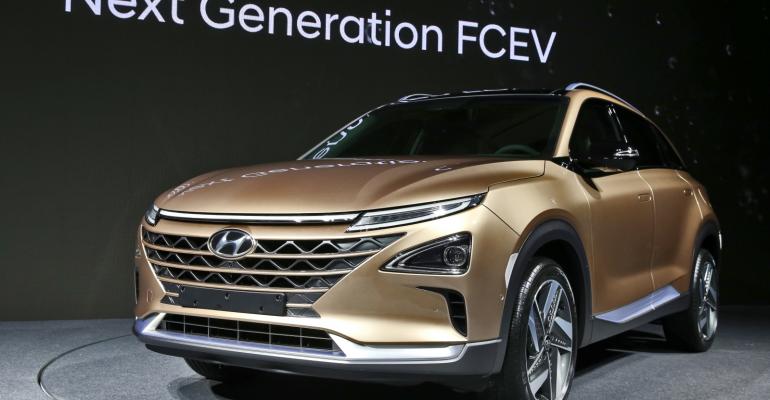Hyundai unveils its next-generation successor to the ix35 Fuel Cell (Tucson Fuel Cell in the U.S.) and commits to plans to add 31 new eco-friendly vehicles to its portfolio through 2020.
The automaker doesn’t reveal the name for the production-ready replacement for Hyundai’s ix35, which has been in serial production since 2014. The name of the new vehicle will be revealed when it is featured at the 2018 CES consumer electronics exhibition in Las Vegas.
Hyundai says energy efficiency is hiked 9% in the new model, which will boast a range of 497 miles (800 km) between hydrogen fill-ups. Power output is increased 20% to 161 hp and cold-start capability now assures the vehicle will operate in temperatures as low as -22˚ F (-30˚ C).
The new model’s design is more focused on aerodynamic efficiency, employing flush-fitting door handles, optimized low-drag wheels and other means to improve air flow.
The new model also will come equipped with additional driver-assist technology, making CES the ideal spot for its official public debut.
Plans to roll out 31 eco-friendly vehicles by 2020 include an EV version of the just-launched Kona compact SUV, which will debut early next year, a Genesis EV model to roll out in 2021 and a new EV on a dedicated architecture with a range of 300-plus miles (500 km) to launch post-2021.
Hyundai also has set a daunting goal of being a global hybrid vehicle leader and will develop an all-wheel-drive SUV and other large models that employ its proprietary Transmission Mounted Electrical Device system used on the Sonata hybrid.





